 Bryson's Dictionary of Troublesome WordsBill Bryson Bryson's Dictionary of Troublesome WordsBill Bryson One of the English language’s most skilled and beloved writers guides us all toward precise, mistake-free usage.  The Endangered English Dictionary: Bodacious Words Your Dictionary ForgotDavid Grambs The Endangered English Dictionary: Bodacious Words Your Dictionary ForgotDavid Grambs Modern dictionaries, the kind most people use, are often the result of a ruthless paring away of many glorious words—so that only the standard, functional, current ones remain. A treasure by every lover of language, this volume reclaims past glories of the language, presenting magnificent words that have the scent of generations and societies past.  Amo, Amas, Amat and More, 1st, First EditionEugene H. Ehrlich Amo, Amas, Amat and More, 1st, First EditionEugene H. Ehrlich A witty and entertaining guide to the use of Latin expressions for one's own advantage in the modern world. 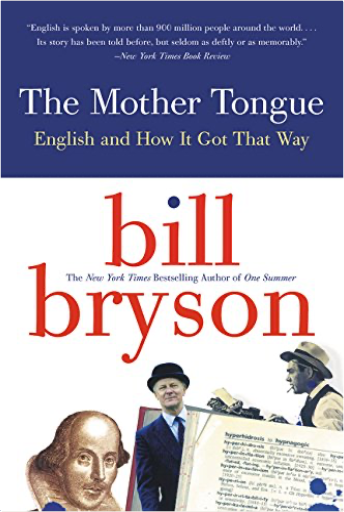 The Mother Tongue - English And How It Got That WayBill Bryson The Mother Tongue - English And How It Got That WayBill Bryson With dazzling wit and astonishing insight, Bill Bryson—the acclaimed author of The Lost Continent—brilliantly explores the remarkable history, eccentricities, resilience and sheer fun of the English language. From the first descent of the larynx into the throat (why you can talk but your dog can't), to the fine lost art of swearing, Bryson tells the fascinating, often uproarious story of an inadequate, second-rate tongue of peasants that developed into one of the world's largest growth industries. 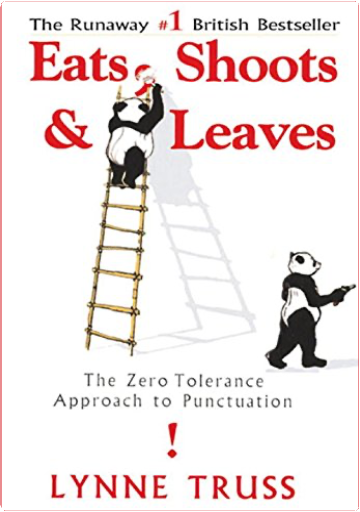 Eats, Shoots & Leaves: The Zero Tolerance Approach to PunctuationLynne Truss Eats, Shoots & Leaves: The Zero Tolerance Approach to PunctuationLynne Truss We all know the basics of punctuation. Or do we? A look at most neighborhood signage tells a different story. Through sloppy usage and low standards on the internet, in email, and now text messages, we have made proper punctuation an endangered species. In Eats, Shoots & Leaves, former editor Lynne Truss dares to say, in her delightfully urbane, witty, and very English way, that it is time to look at our commas and semicolons and see them as the wonderful and necessary things they are. This is a book for people who love punctuation and get upset when it is mishandled. From the invention of the question mark in the time of Charlemagne to George Orwell shunning the semicolon, this lively history makes a powerful case for the preservation of a system of printing conventions that is much too subtle to be mucked about with. 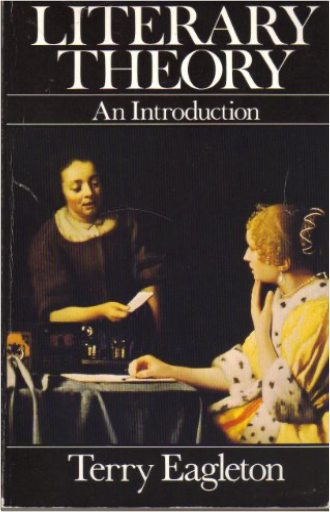 Literary Theory: An IntroductionTerry Eagleton Literary Theory: An IntroductionTerry Eagleton This classic work is designed to cover all of the major movements in literary studies during this century. Noted for its clear, engaging style and unpretentious treatment, Literary Theory has become the introduction of choice for anyone interested in learning about the world of contemporary literary thought. The second edition contains a major new survey chapter that addresses developments in cultural theory since the book's original publication in 1983, including feminist theory, postmodernism, and poststructuralism. 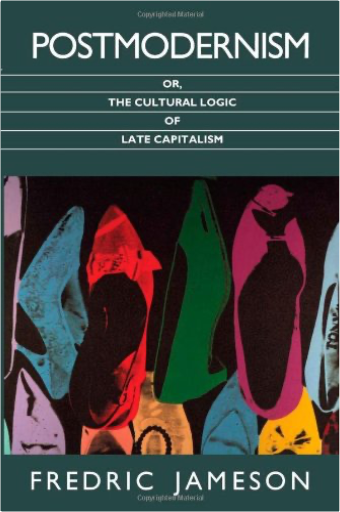 Postmodernism, or, The Cultural Logic of Late CapitalismFredric Jameson Postmodernism, or, The Cultural Logic of Late CapitalismFredric Jameson Now in paperback, Fredric Jameson’s most wide-ranging work seeks to crystalize a definition of ”postmodernism”. Jameson’s inquiry looks at the postmodern across a wide landscape, from “high” art to “low” from market ideology to architecture, from painting to “punk” film, from video art to literature.  Deconstruction: Theory and PracticeChristopher Norris Deconstruction: Theory and PracticeChristopher Norris Since first appearing in 1982 this book has been acclaimed as by far the most readable, concise and authoritative text of its kind. While in no way oversimplifying the complexities of the subject, or understating the challenge it presents, Norris's book sets out to make deconstruction more accessible to the open-minded reader. For this revised edition the author has provided a substantial postscript which looks back over the past ten years of critical debate and seeks to correct some prevalent misunderstandings. The volume also contains an updated bibliography - among the most extensive of its kind - giving details of more than two hundred books published during that period. Some critics have dismissed deconstruction as a harmless academic game; others have denounced it as a terrorist weapon or a discourse of last-ditch nihilist unreason. As Norris demonstrates, both responses are equally wide of the mark. Focusing on Derrida's major texts, and offers a detailed commentary on his readings of Plato, Rousseau, Nietzsche, Husserl, Saussure, Levi-Strauss, J.L. Austin and others, this book brings out the extraordinary subtlety and force that have characterized his project from the outset. Norris also examines the work of those North American critics - Paul de Man, Geoffrey Hartman, J. Hillis Miller and Harold Bloom - who in their own prolonged efforts to move beyond the old' New Criticism have variously registered the impact of Derrida's thought. 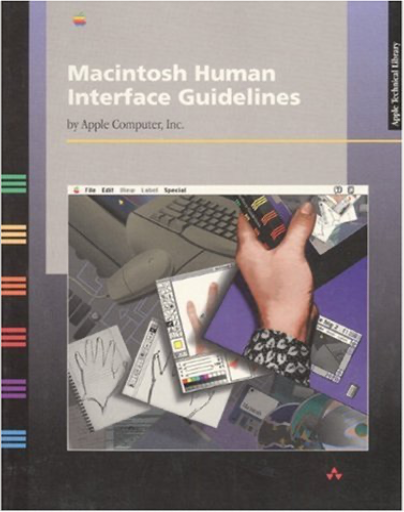 Macintosh Human Interface GuidelinesApple Computer Inc. Macintosh Human Interface GuidelinesApple Computer Inc. Since 1985, Apple and Addison-Wesley have been publishing authoritative books about Apple technologies. The Apple Technical Library provides Macintosh developers with the official treatment of all the major new technologies that Apple releases. Timely, accurate, and clear, this collection of books is the essential resource for anyone developing software for the Macintosh. You'll find definitive coverage of the newest and most important technologies, such as QuickDraw 3D and Apple Guide. You'll also find the classic cornerstones of Macintosh development, like Macintosh Human Interface Guidelines, MacsBug Reference and Debugging Guide, and Planning and Managing AppleTalk Networks. Care has been taken to provide the information using the most appropriate medium. From the multimedia presentations of Electronic Guide to Macintosh Human Interface Design to the electronic reference included with Advanced Color Imaging on the Mac OS, the material is presented in the way that allows you to access it most effectively. 0201622165B04062001 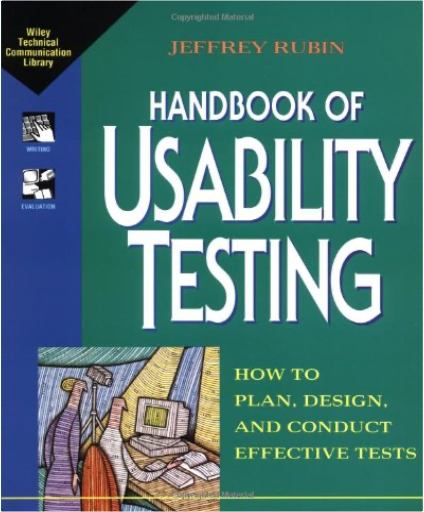 Handbook of Usability Testing: How to Plan, Design, and Conduct Effective TestsJeffrey Rubin Handbook of Usability Testing: How to Plan, Design, and Conduct Effective TestsJeffrey Rubin A supremely usable nuts-and-bolts guide for beginners. A daily tool of the trade for specialists. Handbook of Usability Testing gives you practical, step-by-step guidelines in plain English. Written by Jeffrey Rubin, it arms beginners with the full complement of proven testing tools and techniques. From software, GUIs, and technical documentation, to medical instruments, VCRs, and exercise bikes, no matter what your product, you'll learn to design and administer extremely reliable tests to ensure that people find it easy and desirable to use. 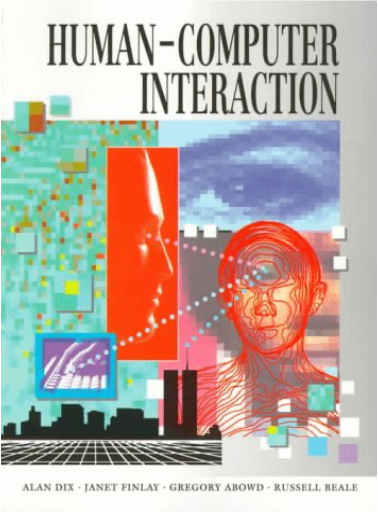 Human-Computer InteractionAlan Dix, Janet Finlay, Gregory Abowd, Russell Beale Human-Computer InteractionAlan Dix, Janet Finlay, Gregory Abowd, Russell Beale This textbook introduces the foundations of human-computer interaction, covering basic psychology and computer technology, models and methods for interface design and applications. It can be used as a text for a course in HCI or as the basis for a curriculum in HCI, with sections of it being taken separately for single course units. Later parts of the book cover more advanced material, but no initial knowledge is assumed. The authors have combined a broad, yet detailed look at HCI from a psychological and computer science perspective, which emphasizes the design of interactive systems. The text is supported by worked examples and exercises of varying difficulty and suggested projects.  Bringing Design to SoftwareTerry Winograd Bringing Design to SoftwareTerry Winograd In this landmark book, Terry Winograd shows how to improve the practice of software design by applying lessons from other areas of design to the creation of software. The goal is to create software that works — really works — because it is both appropriate and effective for the people who use it. The book contains essays contributed by prominent software and design professionals, interviews with experts, and profiles of successful projects and products. These elements are woven together to illuminate what design is, to identify the common core of practices in every design field, and to show how software builders can apply these practices to produce software that is more satisfying for users. The initial chapters view software from the users perspective, featuring the insights of experienced software designers and developers, including Mitchell Kapor, David Liddle, John Rheinfrank, Peter Denning, and John Seely Brown. Subsequent chapters turn to the designer and the design process, with contributions from designers and design experts, including David Kelley, Donald Sch?n, and Donald Norman. Profiles discussing Mosaic, Quicken, Macintosh Human Interface Guidelines, Microsoft Bob, a |
 Made with Delicious Library
Made with Delicious LibraryDenver, CO zipflap congrotus delicious library Tolva, John
